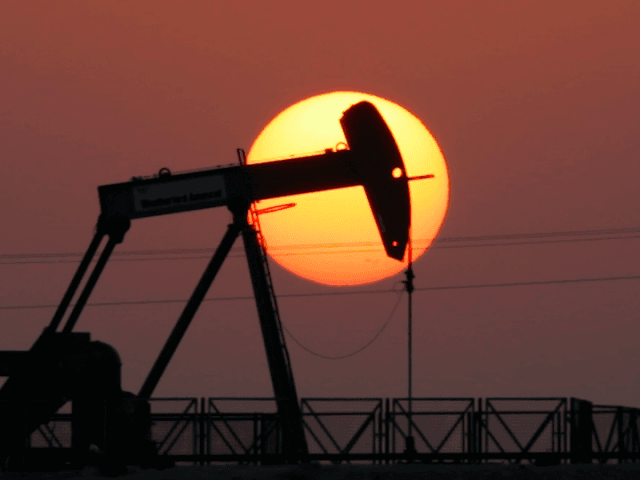Oil crashed by 6.3 percent to $30.98 on January 11, as the price of crude oil continues to fall toward the $25 break-even cost of production that Breitbart News predicted last March.
In a report ten months ago, “Low Oil Prices Ahead as Fracking Breaks Even at $25/Barrel,” Breitbart News warned that the American fracking boom was a disruptive technological revolution that had permanently altered the international economics of oil and gas production.
Since hydrocarbons are lighter than water, they migrate upwards. Their movement is stopped when they reach a low permeability layer of rock that forms a “hydrocarbon trap.” The American energy boom has been about injecting water pressure to fracture shale artificially to allow a flow-path for oil to rise to the surface.
As a result of America’s fracking technology, the six largest U.S. “tight-oil” producers’ costs for exploration, production and non-income-related-taxes fell to about $25 per barrel of oil by the end of 2014.
This very low break-even point does not include the huge interest and principal debt payments owed by many oil and gas companies. But since bankers and other creditors are motivated to continue production until the price of falls to just above the break-even cost, we estimated in March 2014 that high-levels of production will continue until the well-head price falls to below $28 per barrel.
That break-even number still looks credible after the 54 percent drop in the price of crude oil since our report. The U.S. Energy Information Administration just reported that “U.S. commercial crude oil inventories remain near levels not seen for this time of year over the last 80 years.”
Despite most analysts claiming low prices would kill the entire fracking industry, “total energy products supplied over the last four-week period averaged 19.7 million barrels per day, down by just 2.5 percent from the same period last year,” according to EIA.
Closing down production at a traditional vertical oil well usually results in substantial “stoppage of the pores of the oil-bearing rock.” That reduces “bottom-hole” pressure that forces oil up through the well tube to the surface and limits the well’s future production capability. But shale producers inject water and solvents to free oil and gas from shale and create their own pressure to push the oil up through a cement-lined casing.
If crude oil prices do crash below the breakeven point, creditors can order fracking well capped without the risk of future production loss. If crude oil prices rally, drilling rigs and a labor force can be rapidly re-assembled rapidly any time the price of crude oil rises.
Because fracking is so new to the industry, innovations have increased the average daily well production from fewer than 50 barrels a day in 2009 to over 400 barrels today. At the current rate of improvement, fracking productivity growth has doubled per well every 2 years.
Despite the great-gnashing-of-teeth about the cheap price of oil, it is helpful to remember, over the last 140 years, the price of oil adjusted for inflation is about $30. At the current price of $31, oil might be called slightly expensive.

COMMENTS
Please let us know if you're having issues with commenting.